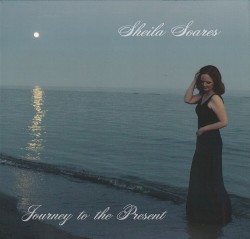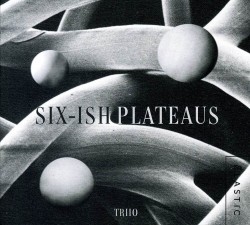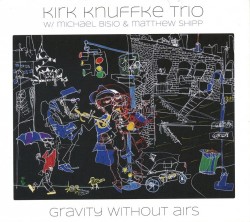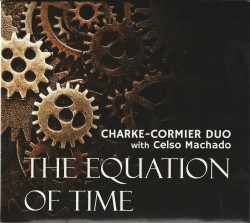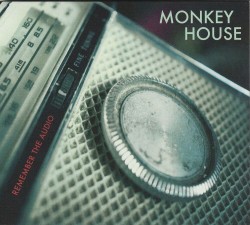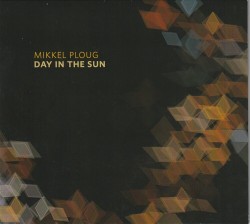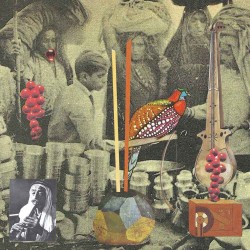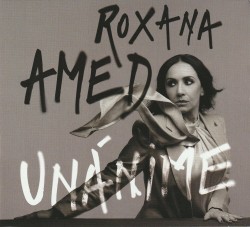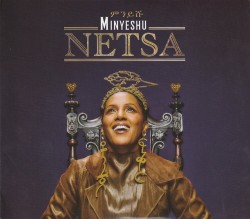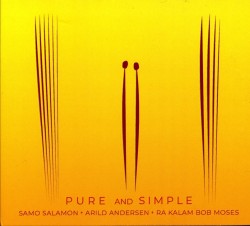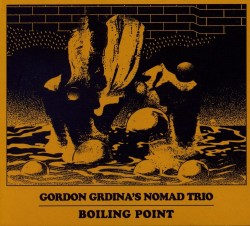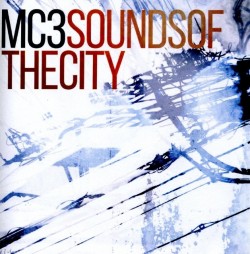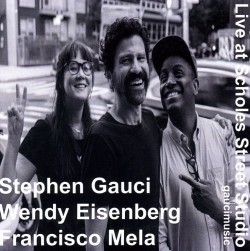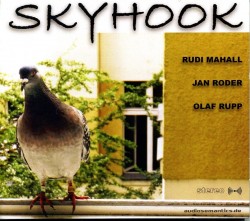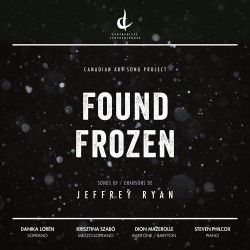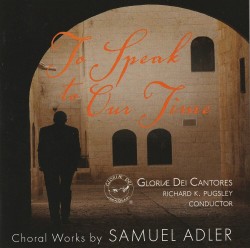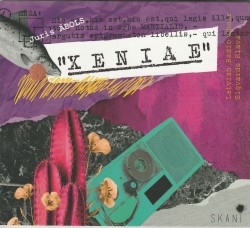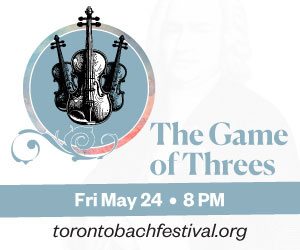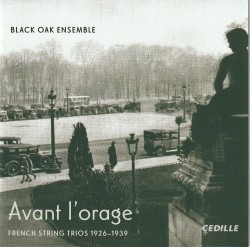 Every now and then a CD comes along of such stunning quality that it almost leaves you speechless. Such is the case with Avant l’orage – French String Trios 1926-1939, a 2CD set priced as a single disc, featuring seven beautifully crafted works, mostly by composers who aren’t household names, in simply superb performances by the Chicago-based Black Oak Ensemble of violinist Desirée Ruhstrat, violist Aurélien Fort Pederzoli and cellist David Cunliffe (Cedille CDR90000 212 cedillerecords.org).
Every now and then a CD comes along of such stunning quality that it almost leaves you speechless. Such is the case with Avant l’orage – French String Trios 1926-1939, a 2CD set priced as a single disc, featuring seven beautifully crafted works, mostly by composers who aren’t household names, in simply superb performances by the Chicago-based Black Oak Ensemble of violinist Desirée Ruhstrat, violist Aurélien Fort Pederzoli and cellist David Cunliffe (Cedille CDR90000 212 cedillerecords.org).
The trios by Henri Tomasi, Robert Casadesus and Gustave Samazeuilh are world-premiere recordings; these three works, along with the trios by Jean Françaix and Gabriel Pierné were all written for and dedicated to the renowned Trio Pasquier. The other two trios here are by Jean Cras and Émile Goué. All seven works are high quality and extremely attractive, and it’s hard to imagine their ever being played better – or with better recorded sound, for that matter.
 The Madrid-based violist Wenting Kang, ably supported by pianist Sergei Kvitko makes her album debut with Mosaic, a CD celebrating an era in which Spanish and French composers were frequently friends and collaborators (Blue Griffin Records BGR609 bluegriffin.com).
The Madrid-based violist Wenting Kang, ably supported by pianist Sergei Kvitko makes her album debut with Mosaic, a CD celebrating an era in which Spanish and French composers were frequently friends and collaborators (Blue Griffin Records BGR609 bluegriffin.com).
Nearly all the tracks were adapted by Kang from violin or cello arrangement scores, to great effect – in fact, Kang sounds like a violin or cello in many of the pieces; her beautifully clear tone and dazzling technical perfection resulting in a wide range of tonal colour.
There are two pieces by Debussy, two by Ravel and four by Fauré, with Spain represented by the Tárrega Recuerdos de la Alhambra in the challenging Ruggiero Ricci solo transcription, the Albéniz Tango and the da Falla Seven Popular Spanish Songs. Casals’ Song of the Birds and a solo Fantasia on the same song by the Japanese composer Akira Nishimura round out a superlative disc.
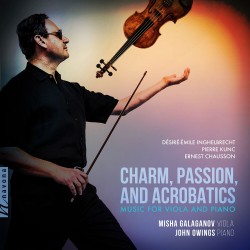 There’s more outstanding viola playing on Charm, Passion, and Acrobatics – Music for Viola and Piano featuring violist Misha Galaganov and pianist John Owings (Navona NV6434 navonarecords.com/catalog/nv6434).
There’s more outstanding viola playing on Charm, Passion, and Acrobatics – Music for Viola and Piano featuring violist Misha Galaganov and pianist John Owings (Navona NV6434 navonarecords.com/catalog/nv6434).
The CD resulted from Galaganov’s purchase of a collection of music scores from the library of Armand Pushman, who died in 1999 aged 98, and who studied viola at the Paris Conservatory in his youth. Among the long-forgotten works were five featured here: the Nocturne (1905), the charming Prelude et Saltarelle (1907) and the short but intense Impromptu from 1922 by the French composer and conductor Désiré-Émile Inghelbrecht (1880-1965), and the 1921 Sonata and 1939 Rhapsodie by the French composer and organist Pierre Kunc (1865-1941), whose manuscripts remained available only to copyright holders until 2021. All are premiere recordings.
Chausson’s final work, the 1897 Piece for Cello (Violin or Viola) Op.39 completes an impressive CD.
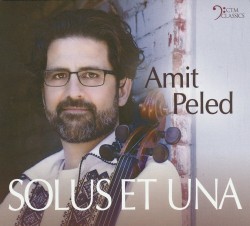 Solus et una (“Alone and together”) is a reflection on cellist Amit Peled`s journey during the COVID-19 pandemic, when he spent a lot of time playing the Bach cello suites in his home studio. The two that attracted him the most were the Suite No.4 in E-flat Major BWV1010 and the Suite No.5 in C Minor BWV1011, both presented on this deeply felt and immensely satisfying CD (CTM Classics 95269 15090 ctmclassics.com).
Solus et una (“Alone and together”) is a reflection on cellist Amit Peled`s journey during the COVID-19 pandemic, when he spent a lot of time playing the Bach cello suites in his home studio. The two that attracted him the most were the Suite No.4 in E-flat Major BWV1010 and the Suite No.5 in C Minor BWV1011, both presented on this deeply felt and immensely satisfying CD (CTM Classics 95269 15090 ctmclassics.com).
The cello is a Giovanni Grancino from c.1695, and Peled uses its deep, warm tone to maximum effect, creating smooth, flowing lines in beautifully judged readings that mine the emotional depths of these exceptional works.
An encore track is the one piece Peled was able to record with his students during the lockdown: an arrangement for eight cellos and piano of the Andante from Brahms` Symphony No.3. It`s a lovely end to a quite beautiful disc.
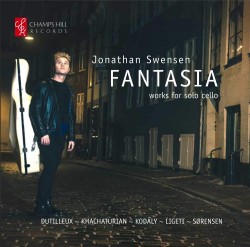 When the Danish cellist Jonathan Swensen won the 2019 Windsor Festival International String Competition part of the prize was a debut recording with Champs Hill Records; his CD Fantasia – works for solo cello is the result (chandos.net/products/reviews/HR_168).
When the Danish cellist Jonathan Swensen won the 2019 Windsor Festival International String Competition part of the prize was a debut recording with Champs Hill Records; his CD Fantasia – works for solo cello is the result (chandos.net/products/reviews/HR_168).
Swensen says that he wanted the studio recording to have “exactly the same energy that comes from a live concert,” and he certainly succeeds with a stunning recital that simply crackles with electricity and intensity.
The established works are the Ligeti Sonata for Solo Cello with a dazzling Capriccio second movement, Dutilleux’s Trois strophes sur le nom de Sacher and a towering reading of the monumental Kodály Sonata for Solo Cello Op.8. A lesser-known work – which should surely be part of the standard repertoire – is Khachaturian’s terrific Sonata-Fantasie for Solo Cello Op.104 from 1974, and the CD’s title track is the 2021 commission Farewell-Fantasia by the Danish composer Bent Sørensen.
Outstanding technique and musical intelligence combine for a superb start to Swensen’s recording career.
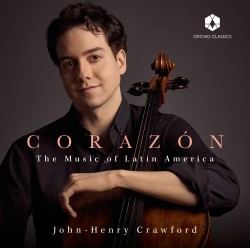 Corazón (Heart) is the new CD from the American cellist John-Henry Crawford, accompanied for the most part by pianist Victor Santiago Asuncion and in three pieces by the South Korean guitarist JIJI (Jiyeon Kim) in a program that reflects the cellist’s love of Latin American music (Orchard Classics ORC100198 orchidclassics.com).
Corazón (Heart) is the new CD from the American cellist John-Henry Crawford, accompanied for the most part by pianist Victor Santiago Asuncion and in three pieces by the South Korean guitarist JIJI (Jiyeon Kim) in a program that reflects the cellist’s love of Latin American music (Orchard Classics ORC100198 orchidclassics.com).
The major work is the Sonata in G Minor by the Mexican composer Manuel Ponce, also represented by the well-known Estrellita and the title track Por ti mi corazón. There are short single pieces by Leo Brouwer, Carlos Guastavino and Egberto Gismonti, as well as three by Heitor Villa-Lobos and two by Astor Piazzolla, whose closing track Oblivion features Crawford on multiple-tracked cello. The guitar provides the accompaniment in Estrellita and the Brouwer and Gismonti pieces.
Every track is a gem, with Crawford quite superb in music he says “pulls at the heartstrings and exudes romance and passion” – as does the playing on a captivatingly gorgeous disc.
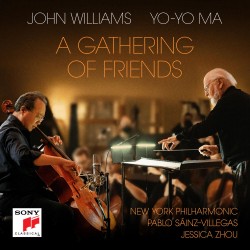 Longtime collaborators John Williams and Yo-Yo Ma reunite for A Gathering of Friends, their new CD with the New York Philharmonic featuring the premiere recording of the revised version of Williams’ Cello Concerto, originally written for Ma in 1994. Selections from three of Williams’ movie scores are also heard in new arrangements with solo cello (Sony Classical 886449741939 sonyclassical.com/releases).
Longtime collaborators John Williams and Yo-Yo Ma reunite for A Gathering of Friends, their new CD with the New York Philharmonic featuring the premiere recording of the revised version of Williams’ Cello Concerto, originally written for Ma in 1994. Selections from three of Williams’ movie scores are also heard in new arrangements with solo cello (Sony Classical 886449741939 sonyclassical.com/releases).
Don’t expect any Korngold-like movie material in the concerto – it’s an intense and highly compelling work very much in a modern style, with some lovely cello writing and a beautiful tonal final resolution.
Three pieces from Schindler’s List – Theme, Kraków Ghetto Winter 41 and Remembrances – need little introduction. The other movie tracks are With Malice Toward None from Lincoln and A Prayer For Peace from Munich, the latter a duo for Ma and guitarist Pablo Sáinz-Villegas.
Ma is joined by harpist Jessica Zhou in A Gathering of Friends – Highwood’s Ghost, written in 2018 for the Bernstein Centenary at Tanglewood, where there is a legend of a ghost in the manor house.
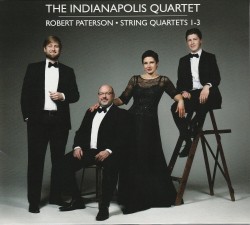 If you still believe that contemporary string quartets are always a tough listen then Robert Paterson String Quartets 1-3 in superb performances by the Indianapolis Quartet should change your mind (American Modern Recordings AMR1054 americanmodernrecordings.com).
If you still believe that contemporary string quartets are always a tough listen then Robert Paterson String Quartets 1-3 in superb performances by the Indianapolis Quartet should change your mind (American Modern Recordings AMR1054 americanmodernrecordings.com).
This is clearly music to be enjoyed. String Quartet No.1 includes a “swing” first movement, a country waltz with a middle section called “Andrew Lloyd Webber Disease” and an Energetic Polka. String Quartet No.2 features Rigor Mortis, portraying the barking dog from the comic strip of the same name.
String Quartet No.3, commissioned by the Indianapolis Quartet explores “other voices,” including Tourette’s syndrome in Twist and Shout and an auctioneer and country fiddling in Auction Chant.
It’s imaginative, hugely entertaining and quite brilliant writing, with Paterson always in total control of style and structure.
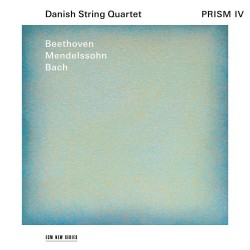 Prism IV – Beethoven Mendelssohn Bach is the penultimate release by the Danish String Quartet in their Prism project, where a Bach fugue is connected to a late Beethoven quartet that is in turn connected to a quartet by a later master (ECM New Series ECM2564 ecmrecords.com/shop).
Prism IV – Beethoven Mendelssohn Bach is the penultimate release by the Danish String Quartet in their Prism project, where a Bach fugue is connected to a late Beethoven quartet that is in turn connected to a quartet by a later master (ECM New Series ECM2564 ecmrecords.com/shop).
Bach’s Fugue in G Minor from Book 1 of the Well-Tempered Clavier opens the disc, followed by an intense performance of Beethoven’s String Quartet No.15 in A Minor Op.132, published in 1826. Crystal-clear definition, terrific ensemble, dynamics and tone all make for an outstanding reading.
The standard never drops in Mendelssohn’s String Quartet No.2 in A Minor Op.13, begun in July 1827 just months after Beethoven’s death. Mendelssohn was fascinated by Beethoven’s late quartets, and his Op.13 continues their progress towards the new Romanticism.
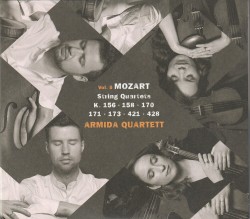 The 2CD set of Mozart String Quartets Vol.5 is the final volume in the series by the Armida Quartet (Avi 8553496 avi-music.de).
The 2CD set of Mozart String Quartets Vol.5 is the final volume in the series by the Armida Quartet (Avi 8553496 avi-music.de).
The two earliest quartets are No.3 in G Major K156 and No.5 in F Major K158 from a group of six written in Milan in 1772. The quartets No.10 in C Major K170, No.11 in E-flat Major K171 and No.13 in D Minor K173 are from the six “Viennese” quartets written the following year after Mozart’s exposure to Haydn’s recently published string quartets.
Finally, there are two works from the six “Haydn” quartets that followed the publication of Haydn’s own Op.33 set of six in 1783: No.15 in D Minor K421 and No.16 in E-flat Major K428.
The Armida Quartet is working with the publisher G. Henle Verlag on a new Urtext Edition of the Mozart quartets, and their insight and attention to detail are evident throughout finely judged performances.
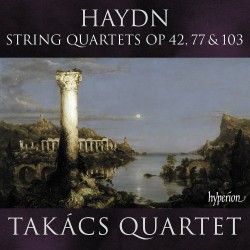 There’s more top-notch quartet playing, this time from the Takács Quartet, on Haydn String Quartets Opp.42, 77 and 103 (Hyperion CDA68364 hyperion-records.co.uk/dc.asp?dc=D_CDA68364).
There’s more top-notch quartet playing, this time from the Takács Quartet, on Haydn String Quartets Opp.42, 77 and 103 (Hyperion CDA68364 hyperion-records.co.uk/dc.asp?dc=D_CDA68364).
The String Quartet in D Minor Op.42 was the first following the huge success of Haydn’s Op.33 set. The two Op.77 quartets – No.1 in G Major and No.2 in F Major – were the final two quartets that Haydn completed, the two middle movements of a quartet unfinished at his death and published as Op.103 completing the CD.
The Takács Quartet has previously released CDs of Haydn’s Op.71 and Op.74 Quartets to great acclaim and it’s easy to hear why, with bright, clear playing, a lovely dynamic range and a resonant recording making for a delightful disc.
 The Brazilian guitarist Plínio Fernandes, now resident in London, makes his CD debut with Saudade (Nostalgia), a “virtuosic, soaring melodic set” combining his two passions – the popular songs of Brazil and the classical tradition of Villa-Lobos (Decca Gold 4857617 pliniofernandesmusic.com).
The Brazilian guitarist Plínio Fernandes, now resident in London, makes his CD debut with Saudade (Nostalgia), a “virtuosic, soaring melodic set” combining his two passions – the popular songs of Brazil and the classical tradition of Villa-Lobos (Decca Gold 4857617 pliniofernandesmusic.com).
It’s the familiar Five Preludes of Villa-Lobos that are at the centre of a very attractive recital, the other 13 tracks featuring songs by, among others, Antônio Carlos Jobim, Milton Nascimento, Violeta Parra and Jacob do Bandolím, mostly in arrangements by Sergio Assad. Guest artists are cellist Sheku Kanneh-Mason, his violinist brother Braimah and vocalist Maria Rita.
“An entrancing collection,” says the publicity blurb. And rightly so.
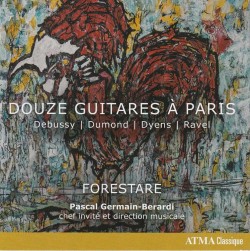 Forestare, the Montreal ensemble of 12 guitars and a double bass celebrates its close ties with France on Douze Guitares à Paris, an album dedicated to works by Debussy and Ravel and compositions by contemporary French guitarists Roland Dyens and Arnaud Dumond (ATMA Classique ACD2 2835 atmaclassique.com/en).
Forestare, the Montreal ensemble of 12 guitars and a double bass celebrates its close ties with France on Douze Guitares à Paris, an album dedicated to works by Debussy and Ravel and compositions by contemporary French guitarists Roland Dyens and Arnaud Dumond (ATMA Classique ACD2 2835 atmaclassique.com/en).
A dozen guitars sounds like a lot of separate voices, but the arrangements here are all in four parts with three players assigned to each, a system essentially ensuring a strong, even tone with no loss of dynamic range.
Hamsa by Dyens (1955-2016) is followed by Debussy’s Suite bergamasque. An effective transcription of Ravel’s Ma mère l’Oye comes between the two impressive works by Dumond (born 1956): the terrific Allegro barbaro for ten guitars, double bass and two soloists, and his Lumières sur le Saint-Laurent for solo electric guitar and classical guitar ensemble.
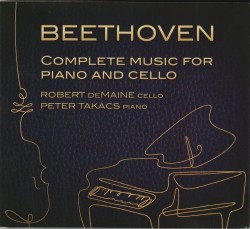 There’s another 2CD set of Beethoven Complete Music for Piano and Cello, this time by Robert deMaine, the principal cellist of the Los Angeles Philharmonic, and pianist Peter Takács (Leaf Music LM233 leaf-music.ca).
There’s another 2CD set of Beethoven Complete Music for Piano and Cello, this time by Robert deMaine, the principal cellist of the Los Angeles Philharmonic, and pianist Peter Takács (Leaf Music LM233 leaf-music.ca).
The five sonatas – Op.5 Nos.1 & 2, Op.69 and Op.102 Nos.1 & 2 – are joined by the three sets of variations: the 12 Variations in G Major on Handel`s “See the conqu’ring hero comes,” the 12 Variations in F Major on “Ein Mädchen oder Weibchen” and the Seven Variations in E-flat Major on “Bei Männern, welche Liebe fühlen”, both from Mozart`s Die Zauberflöte.
DeMaine plays with a quite dark and rich tone, but tends to sound a bit muffled or indistinct at times, as if set too far back in the balance. There’s fine playing and ensemble work here though, particularly in the really tricky Allegro vivace movements.
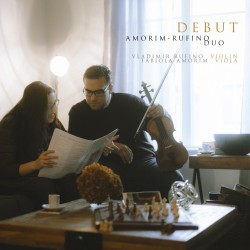 Debut is the first recording by the Brazilian-Canadian Amorim-Rufino Duo of violinist Vladimir Rufino and violist Fabiola Amorim in a recital of somewhat uneven musical and technical quality (Azul AMDA1755 azulmusic.com.br).
Debut is the first recording by the Brazilian-Canadian Amorim-Rufino Duo of violinist Vladimir Rufino and violist Fabiola Amorim in a recital of somewhat uneven musical and technical quality (Azul AMDA1755 azulmusic.com.br).
The 1789 Sonata No.1 by Paul Wranitzky and the 1788 Duo in C Major Op.19 No.4 by Franz Anton Hoffmeister open the disc, the latter the stronger piece with some particularly good viola work. The Villa-Lobos Duo from 1946 is followed by the world-premiere recording of Two Hearts in Concert, the short 2021 work written for the duo by Canadian composer Frank Horvat. The best work in the recital, Bohuslav Martinů’s Three Madrigals H.313, closes the disc.
There’s competent playing of challenging works here, although the recorded sound could be better balanced and warmer.
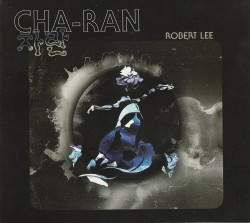 Cha-Ran
Cha-Ran

